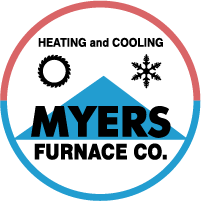
You shouldn’t have to sacrifice comfort or empty your wallet to keep your residence at the right temp during the summer.
But what is the best temperature, exactly? We go over ideas from energy professionals so you can find the best temp for your loved ones.
Here’s what we advise for the most energy-efficient setting for air conditioning in Belton.
Recommended Thermostat Settings for Summer
Most families find using the thermostat at 72-73 degrees is most comfortable. However, if there’s a big difference between your interior and outside temperatures, your cooling bills will be bigger.
These are our suggestions based on the U.S. Department of Energy (DOE) and ENERGY STAR®.
While at home: 78 degrees. While that seems hot, there are methods you can keep your house pleasant without having the air conditioner going frequently.
Keeping windows and blinds closed during the day keeps chilled air where it should be—indoors. Some window treatments, like honeycomb shades or plantation shutters, are designed to give extra insulation and better energy efficiency.
If you have ceiling fans in your home, the DOE says you can move thermostat settings about 4 degrees warmer without sacrificing comfort. That’s due to the fact they freshen through a windchill effect. Since they cool people, not spaces, shut them off when you move from a room.
If 78 degrees still appears too warm initially, try doing a trial for a week or so. Get started by raising your temperature to 78 degrees while you’re home. Then, steadily decrease it while adhering to the tips above. You could be surprised at how cool you feel at a hotter temperature setting.
While away: 88 degrees. There’s no need to keep the air conditioning working all day while your house is vacant. Switching the temperature 7–10 degrees higher can save you an estimated 5–15% on your cooling expenses, according to the DOE.
When you come home, don’t be tempted to set your thermostat below 78 to cool your residence more rapidly. This isn’t effective and often results in a more expensive electricity bill.
A programmable thermostat is a useful way to keep your temperature controlled, but you have to set programs. If you don’t utilize programs, you might forget to increase the set temperature when you go.
If you need a hassle-free remedy, think about getting a smart thermostat. This thermostat links with your phone, so it is aware when you’re at your house and when you’re away. Then it instinctively adjusts temperature settings for maximum savings. How much exactly? An estimated $180 annually on heating and cooling, according to ENERGY STAR.
Another plus of having a smart thermostat? You can use your phone to watch and adjust temperature settings from almost anywhere.
While sleeping: Around 70 degrees. While ENERGY STAR advises 82 degrees, that may be unpleasant for the majority of families. The majority of people sleep better when their sleeping area is chilled, so that’s why the National Sleep Foundation advises 60–67 degrees. But that might be too cool, due to your clothing and blanket preference.
We advise following a comparable test over a week, setting your temperature higher and gradually lowering it to find the right temp for your residence. On cool nights, you might learn keeping windows open at night and relying on a ceiling fan is a better solution than running the AC.
More Approaches to Use Less Energy During Warm Weather
There are added methods you can spend less money on cooling bills throughout hot weather.
- Install an energy-efficient air conditioning system. Central air conditioners only work for about 12–15 years and lose efficiency as they age. An upgraded air conditioner can keep your residence cooler while keeping cooling costs down.
- Set regular air conditioner tune-ups. Regular air conditioner maintenance keeps your unit operating smoothly and could help it operate at greater efficiency. It can also help lengthen its life cycle, since it allows technicians to pinpoint seemingly insignificant troubles before they cause a major meltdown.
- Switch air filters regularly. Use manufacturer instructions for replacing your air filter. A clogged filter can result in your system short cycling, or switch on and off too frequently, and increase your utility.
- Measure attic insulation levels. Just about 90% of residences in the USA don’t have enough insulation, according to the Insulation Institute. Most southern climates should have 13–14” of attic insulation, while northern climates should have 16–18”.
- Have your ductwork inspected. Ductwork that has separated over time can leak cold air into your attic, walls or crawl space. This can result in huge comfort issues in your residence, including hot and cold spots.
- Seal cracks, doors and windows. Keep muggy air where it should be by sealing holes. You can also caulk or weather strip doors to keep more conditioned air indoors.
Use Less Energy This Summer with Myers Furnace Company
If you are looking to use less energy during hot weather, our Myers Furnace Company pros can assist you. Reach us at 816-249-1619 or contact us online for additional information about our energy-saving cooling solutions.
